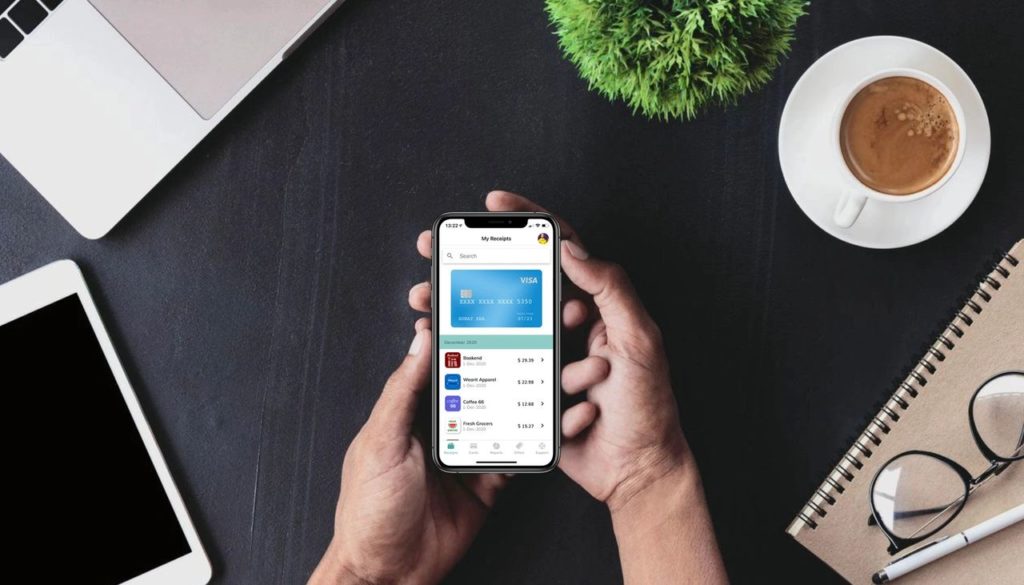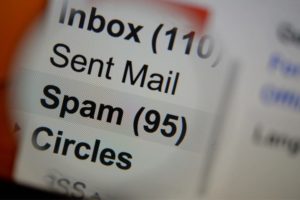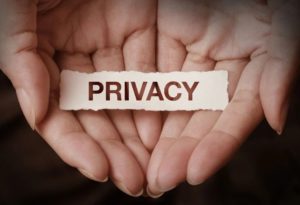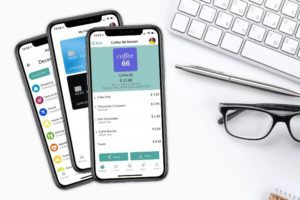What are digital receipts and why should we actually use them? Digital receipts are a form of receipt issued by merchants, sent directly to your phone or email. You may also hear them referred to as electronic receipts or e-receipts. Ultimately, they serve as proof of payment, without the need for a physical paper trail. Digital receipts are generally considered more convenient as they are less likely to be lost, won’t fade and don’t require the use of paper.
For modern consumers (you and me), electronic receipts are easier to file and retrieve when the time comes to return something, file your taxes, write up an expense report or make a claim on a warranty, etc. On the flip side, for modern merchants, electronic receipts are a very effective way to build a client list, generate data on the customers and make targeted offers to retain their existing clientele.
Here are the three main reasons to use e-receipts:
1. They save paper
2. They save time
3. They don’t get lost
Environmental Impact of Paper Receipts
People don’t often think about the environmental impact of paper receipts, and how many they actually collect on a monthly basis! Did you know that in the US alone an estimated 300 billion paper receipts are printed yearly, consuming 25 million trees, 18 billion liters of water and 22 million barrels of oil? Neither did we. These tiny slips of paper can pile up! In 2020 alone, an estimated 400,000 metric tons of receipt paper was used in the US. That’s about the weight of 2,000 blue whales! That’s right. A tiny slip of paper piling up to weigh as much as whales.
In addition, thermal receipts are coated in the chemical known as BPA, which is non-recyclable meaning they all end up in landfills! 2,000 blue whales take up a lot of room in a landfill…
Let’s not forget about the deforestation aspect of this too. Forests are vital for our planet, as they absorb CO2 from our air, basically acting as a filter. In fact, a single tree can absorb the emissions produced by 5,400 digital receipt emails every year. Just imagine what happens when you cut them down.
Evolution of Digital Receipts
Paper has been used as a proof of purchase ever since the concept of purchase over bargaining came into place. So why are we still so hung up on the idea of using paper? Is it more comforting to have a tangible proof of your purchase? Maybe. But, much like everything else we have gotten used to and now can’t live without (moving from Blockbusters to Netflix, flip phones to smartphones, large and heavy books to Kindles) digital receipts are bound to be the new go-to! It’s just logical – paper may be comforting but it’s just not as convenient. We can lose it, the ink can fade, it can get wet or damaged.
Advances in technology have allowed for the next natural transition in commerce to happen. A receipt revolution. Digital receipts have allowed merchants to increase customer engagement. “Green” receipts have gone mainstream. It’s no surprise as to why – they bring significant benefits to the business, no matter the industry or size. Ultimately, digital receipts help their bottom line.
Digital Receipt Solution: Email Receipts
The latest digital receipt technology allows retailers to include marketing messaging – they can even personalize the emails to customers themselves. With the information gathered from email sign ups (aka the email you need to give to get the receipt digitally), retailers can identify who their best target consumer is and the type of merchandise they are more likely to keep buying. Email receipts have become the go-to as far as replacing traditional receipts goes, but they are far from perfect.
For the retailer, emailed collecting through digital receipt options open the door to email marketing. According to a 2012 report by Epsilon International, 83% of retailers chose to offer electronic receipts as a way to collect customers’ email addresses. Digital receipts provide “deeper insight into consumer shopping habits, which can lead to more targeted advertising mailers, promotions, and emails”, according to the report. While this may sound good, this assumes that the customers are giving the merchant permission to flood them with marketing emails, which could easily backfire on the retailer.
That said, consumers are beginning to view email marketing as junk, overflowing their inboxes. Unsolicited, not helpful, and not appreciated. You’ve been there right? Gotten that weird promotion or newsletter from a store you don’t even remember shopping at or the millions or emails from Bed, Bath & Beyond, Target or that one ad you clicked on through Instagram and signed up for to get the discount code (but didn’t even buy anything from!). This is the reason why today, email marketing has as much potential to retain customers as it does to drive them away.
Data and Privacy Concerns
Given what you just read, of course, a retailer will happily take your email to market their product and send you promotions in the hopes that you’ll come back. But did you know that they can also track your purchases across all channels too? Even the purchases you made somewhere else or online! Basically, if you give out your email, it implies consent. But by simply wanting a digital receipt (and having to use your email to get it) does it actually mean you are happy to receive all kinds of marketing emails and get your data tracked, even long after your purchase?
A 2019 campaign found that 62% of consumers are concerned about the risks of their personal information being hacked, stolen or lost, when divulging it. Privacy concerns about sharing personal data for digital receipts are widespread and worldwide.
In 2018, the European Union brought into effect the General Protection Regulation (or GDPR), in the hopes of changing how businesses and public organizations handle and use their customers’ information. The law aimed to give the individual back some control over how their personal information was used. With the GDPR in place, retailers can no longer assume the individual has consented to the endless use of their data for marketing purposes. Per the GDPR, there has to be a box consenting and acknowledging the use of your information and the retailer is legally bound to hold records of anyone who consents. While this law is only in effect in the EU, it’s definitely shed light on a systemic misuse of information and is something people are becoming increasingly aware of.
So Are Emailed Receipts Actually a Good Thing?
Digital receipts are a version of your paper receipt that is sent to your phone. This is generally done by giving your email (or in some cases phone number) to the merchant, who is then able to send you a copy directly without having to print it and give you a physical copy.
It is definitely more efficient and convenient but it does come at a cost. By giving out your email, you are vulnerable to hacking, unsolicited email marketing, spam emails and data tracking. This may sound ominous, but at the same time, BPA-coated paper receipts are non-recyclable and end up in landfills, hurting the environment and requiring innumerable trees to be cut down unnecessarily.
Digital Receipt Solution: Digital Receipt Apps
Okay, so you may not love the idea of a digital receipt now that you’ve read about what merchants can do with your email so let me finally give you some good news. There is another way! There are different digital receipt options. Given what we’ve mentioned about, they should check the following boxes:
✔Eliminate the need for paper receipts
✔Protect your privacy
✔Increase payment efficiency
✔Provide an overview of your spending
So far, there are three ways to receive digital receipts without having to give out your email every time you buy something:
Scanning the Receipt
These are several apps that allow you to upload your receipt. I’m sure you’ve seen a receipt or two with a barcode at the bottom. The apps to which you upload these receipts may help you be more organized and less likely to lose out on a return, but still require you to print a receipt. So it doesn’t really check the environmental box or make payments more efficient.
❌Eliminate the need for paper receipts
✔ Protect your privacy
❌Making payment more efficient
✔ Provide an overview of your spending
Store App
When you download the store’s app, you don’t have to give out your email every time. You can (for the most part) get it sent directly to your app, often even collecting points. A store app may not require you to share your email with every payment, as they would already have it upon opening an account, but it also would not provide an overview of your spending across channels. If anything, only with purchases made in that store. Not to mention, smaller-scale stores don’t have an app for their store and may not sell online. This could harm small businesses.
✔ Eliminate the need for paper receipts
❌Protect your privacy
❌Making payment more efficient
❌Provide an overview of your spending
Apps that connect directly to your bank account
There are some apps out there that are connected directly to your bank account. Examples of these could be apps such as Apple Wallet and many others. This may be convenient for some, but these apps do not provide an overview of your spending. Many have several credit cards and bank accounts. As such, they are not able to see an overview of their spending through a single platform.
✔ Eliminate the need for paper receipts
✔ Protect your privacy
✔ Making payment more efficient
❌Provide an overview of your spending
With all that said, we thought there needed to be a better way…
Introducing the All in One Digital Receipt App
At e.pop, we have found a way to check all the boxes above and optimize a product that satisfies both parties in a transaction.
✔ Eliminate the need for paper receipts
✔ Protect your privacy
✔ Increase payment efficiency
✔ Provide an overview of your spending
🌟Itemize and categorize your purchases by industry
For the customer to receive digital receipts without ever having to share their email address with the merchant. All the while categorizing your spending and helping you budget! At the same time, merchants can cut costs on printing receipts and pledge their sustainability to their consumers. In doing so, everyone (including the planet) can be satisfied and live a little more sustainably!
“When customers can receive and store digital receipts but keep their anonymity intact, everyone wins.”
–Retail Minded

Francesca Gobbetti
Community Manager at e.pop. Social and environmental awareness is what keeps Francesca up researching and writing the occasional blog after hours.





